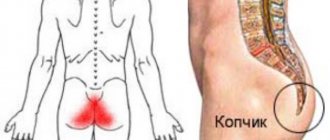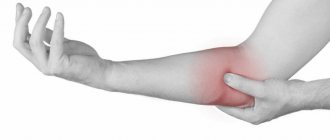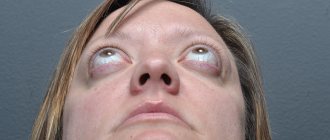Mumps infection (mumps, popularly known as mumps) is an acute infectious disease caused by a virus that affects glandular tissue (mainly the salivary glands) and the nervous system.
This disease can be classified as one of the most common infectious diseases. This is facilitated by the fact that the susceptibility to this virus in a person who does not have immunity is extremely high. Most often, mumps infection is registered in childhood, so this disease is classified as a “childhood disease.” Before the introduction of mass vaccination, the age group in which mumps was most often detected were children from 3 to 6 years old. At the moment this is the age category of 5–15 years. According to statistics, mumps occurs more often in boys than in girls.
Causes of mumps
The causative agent of mumps infection is a virus belonging to the genus Paramyxovirus. The source of infection is exclusively a sick person, who becomes infectious starting from the incubation period. Infection of a child occurs mainly through airborne droplets: when communicating with a sick person who, when talking or coughing, releases saliva and nasal secretions containing viruses. Somewhat less often, infection occurs through infected toys, dishes, and personal items.
When an aerosol containing a virus is inhaled, the latter enters the epithelium of the upper respiratory tract, where it multiplies. Then it penetrates the blood and spreads throughout the body, however, since the virus is tropic (oriented) to glandular tissues, it is fixed mainly in them, where it multiplies again, but more massively. Then the virus enters the blood again, which leads to its further spread and the formation of new foci of infection.
In damage to the CNS (central nervous system), the main one is the immune mechanism (weak primary immune response). The mechanism of damage to non-glandular structures has not been fully studied, however, in some individual cases, for example, with damage to the facial nerve with further paralysis of the facial muscles, the damage can be associated with the mechanical effect of the enlarged gland on the nerve due to prolonged compression of the latter. In some other cases (nephritis, myocarditis, arthritis), immune complexes are considered the main damaging mechanism.
Types of mumps
The word “mumps” itself means inflammation of the parotid gland. Based on this, the disease may be:
- epidemic - “mumps”, the causative agent of which is the mumps virus;
- non-epidemic , which occurs due to injury, bacterial infection of the parotid gland.
If we talk about mumps, there are several classification options.
According to the International Classification of Diseases, the following forms of the disease are distinguished:
- Mumps is a lesion of the parotid salivary glands (one or both). At the same time, there is no involvement of other organs and systems in the pathological process.
- Mumps orchitis.
- Mumps meningitis.
- Mumps encephalitis.
- Mumps pancreatitis.
- Mumps with complications: mumps arthritis (inflammation of the joints);
- mumps myocarditis (damage to myocardial tissue);
- mumps polyneuropathy (damage to peripheral nerves);
- mumps nephritis (inflammatory kidney damage).
The following classification of mumps infection is also widely used in clinical practice:
- Type: Typical form of the disease: glandular (mumps, orchitis, pancreatitis, thyroiditis and other localizations of the inflammatory process in glandular tissues);
- nervous - characterized by damage to nervous structures (meningitis, encephalitis);
- mixed - observed when several structures are affected (mumps + orchitis, mumps + meningitis and other combinations).
- erased - clinical symptoms are mild, the child’s general condition is not impaired, there is no intoxication;
- Severity: mild (including erased and atypical), moderate, severe.
- The course of mumps is always acute. Depending on the presence of complications, complicated (damage to the salivary glands and other organs: meningitis, meningoencephalitis, pancreatitis, orchitis, mastitis, myocarditis, arthritis, nephritis) and uncomplicated (damage to only the salivary glands, one or more) mumps are distinguished.
There are manifest, inapparent forms of mumps infection, as well as residual phenomena of mumps, which include:
- testicular atrophy;
- infertility;
- diabetes;
- deafness;
- dysfunction of the central nervous system.
How to identify infertility after mumps
As a rule, the effects of mumps are not symptomatic. Patients who have had mumps do not experience problems in their sexual life and think about treatment only after prolonged unsuccessful attempts to conceive a child.
To diagnose male infertility, the patient takes a spermogram. Laboratory examination of sperm allows you to see the morphology of sperm, their structure and quantity.
The diagnosis is confirmed by the results of a spermogram, according to which the absence of active healthy sperm is detected in the seminal fluid or their number is negligible for natural fertilization.
Ultrasound of the scrotum reveals areas of necrotic tissue and testicular atrophy. If neoplasms are detected during diagnosis, a biopsy is prescribed. Selected tissues are examined in the laboratory to exclude or confirm oncology.
Symptoms of mumps
Since this disease can affect different organs and systems, the symptoms will differ in one form or another. The most typical lesion is the parotid gland, which is manifested by the following symptoms:
- The onset of the disease is acute. The child experiences a sharp increase in body temperature to 38–40°C.
- Severe symptoms of intoxication, which are manifested by chills, headache, weakness, body aches, and muscle pain. Nausea and vomiting are also possible.
- Pain and swelling at the site of the parotid gland (down from the auricle along the lateral part of the lower jaw). Painful sensations intensify when chewing, talking, or pressing on the area where the gland is projected. At the onset of the disease, the process is most often unilateral, but later the second parotid gland may also join.
- Facial asymmetry caused by gland swelling. Swelling may spread to the child’s cheek and neck. When two parotid glands are affected, the face takes on a characteristic shape, which is why the disease was given the name “mumps.”
If secondary foci of infection occur, the temperature may rise again and other symptoms may develop, indicating the localization of the infection.
If the sublingual and submandibular salivary glands are affected, swelling is detected at the site of the gland, a disturbance in the secretion of saliva, and there may be a decrease in its production, which is manifested by dry mouth, or an increase (hypersalivation).
Orchitis (inflammation of the testicles) is also a very common form of mumps infection. It is registered mainly in adolescents and young men; before the onset of puberty it is practically not detected. Main symptoms:
- Occurs 6–8 days after damage to a gland of another location (most often the parotid).
- Increased temperature, intoxication.
- Intense pain in the groin area (mainly in the scrotum and testicles), aggravated by walking.
- The testicles increase in volume, become dense, and sharply painful when touched.
- The skin of the scrotum becomes red (sometimes with a bluish tint) and becomes swollen.
- The inflammatory process is often unilateral. Bilateral orchitis is detected in approximately 15% of cases.
When the pancreas is damaged, mumps pancreatitis occurs. It is worth noting that this form is more often registered in adults than in children. Also quite rare is thyroiditis, an inflammatory lesion of the thyroid gland.
A fairly severe form of mumps infection is damage to the nervous system. Most often it occurs against the background of an inflammatory process in the glandular organs, but it can also act as the only manifestation of mumps infection.
Symptoms of mumps meningitis:
- A sharp increase in body temperature to subfebrile (37.1–38°C) or febrile (38–40°C) values.
- Repeated vomiting that does not bring relief.
- Severe headache.
- The child becomes drowsy, apathetic, lethargic. Rarely, convulsions, delirium, and excessive agitation may occur.
- Specific symptoms of meningitis appear (stiff neck and others).
With mumps encephalitis, symptoms may include the development of paresis, speech disorder, trembling of the limbs, nystagmus (involuntary movements of the eyeballs). It is also possible to develop meningoencephalitis (with symptoms of both meningitis and encephalitis).
Based on all the listed symptoms, we can conclude that mumps infection is characterized by multiple organ damage, and rarely this disease is local in nature. If these signs are detected in a child, you should contact a specialist as soon as possible to determine the cause of the symptoms and prescribe appropriate treatment.
Diagnosis of mumps
The initial stage of diagnosing mumps infection is an examination of the child by a doctor, during which the specialist identifies a number of characteristic signs indicating this disease. A number of laboratory tests are used to confirm the diagnosis:
- Complete blood count, which is characterized by a decrease in the total number of leukocytes and a normal ESR (erythrocyte sedimentation rate). However, with the development of secondary foci of infection, an increase in leukocytes and an increase in ESR may be observed.
- Specific diagnostic methods that are aimed at directly identifying the virus that caused mumps infection: isolation of the virus from the secretions of the salivary glands, blood, urine, cerebrospinal fluid (if the central nervous system is affected);
- flushing from the throat.
Diagnostic methods
When a characteristic tumor appears, as a rule, the diagnosis of mumps comes down to confirming the clinical symptoms. In unobvious cases, the patient is prescribed:
- general laboratory tests of blood and urine;
- serological studies ELISA, RSK, RTGA;
- PCR test.
To identify antibodies, blood or other biological fluids are taken from the patient for analysis - throat swabs, salivary gland secretions or urine. The ELISA method allows you to detect the presence of the virus 2-3 days after the onset of the disease, while other tests give reliable results no earlier than 5-6 days.
Treatment of mumps
Treatment of this disease can take place both on an outpatient basis (at home) and in a hospital. Since specific treatment for mumps is not used, the basis of therapy is the organization of the necessary regimen, diet, as well as symptomatic treatment. It is mandatory to provide the child with strict bed rest for the entire period of fever, and in the presence of orchitis or damage to the nervous system - for a longer period. It is also worth paying attention to your diet. Since mumps increases pain when chewing, food should be predominantly liquid. Drinking plenty of warm fluids is also recommended.
Symptomatic treatment depends on the form of the disease. In order to reduce the inflammatory reaction, as well as to reduce temperature, non-steroidal anti-inflammatory drugs are used; in case of damage to the central nervous system, corticosteroids can be used. In case of damage to the parotid gland, the use of a warming compress, UHF therapy is indicated; in case of mumps orchitis, the application of a suspension (special support bandage), painkillers, as well as cold on the testicular area. For mumps pancreatitis, antispasmodics and antisecretory drugs are used.
Quarantine for mumps is imposed for 21 days from the moment a case of the disease is detected in the team.
To prevent mumps, children aged 1 and 6 years should be vaccinated with a combination vaccine.
Therapeutic measures
There are no specific treatments for mumps. Treatment is mainly aimed at reducing clinical manifestations and preventing complications of this disease. Patients are prescribed antibacterial agents and novocaine blockades. Be sure to adhere to bed rest, diet and drink plenty of fluids.
In order for the immune system to defeat the virus, the patient needs good rest and sleep for 1.5-2 weeks. The menu of such a patient should not include spicy, fried, fatty and starchy foods. You need to take food in small portions and often.
If a child gets mumps, his diet should consist of plant and dairy products. With mumps, the patient is bothered by severe dryness in the oral cavity, so the oral mucosa must be constantly moisturized. That is why such patients are recommended to drink frequently in large volumes.
Anti-inflammatory and antihistamine medications are prescribed for mumps. It would also be a good idea to take vitamins and antitoxic drugs.
Consequences of mumps
With timely consultation with a doctor and timely treatment, the prognosis of the disease is favorable in most cases. However, mumps can cause a number of complications both during the height of the disease and at a later date.
The main complications caused by mumps infection are as follows:
- Testicular atrophy after bilateral mumps orchitis, which leads to infertility and eunuchoidism.
- Myocarditis (in most cases manifested by heart rhythm disturbances).
- Arthritis, arthralgia (mainly large joints are affected).
- Optic nerve damage.
- Hearing loss. It can be temporary, but permanent hearing loss is also possible, and with a bilateral process, complete deafness.
- Paresis.
- Neuritis of the facial nerve.
- Hydrocephalus due to impaired cerebrospinal fluid dynamics.
- Diabetes mellitus (after mumps pancreatitis).
- Nephritis.
This disease is extremely dangerous due to its complications, it can lead to disability and a significant deterioration in the child’s quality of life, therefore, at the first suspicion of this disease, you should consult a doctor.










